If you’re a fan of recycling and reusing, you’re sure to like Ting flooring made from reclaimed leather belts. The old belts are honed to identical thickness, then glued into panels that can be used to cover floors or walls. $75 per sq. ft.
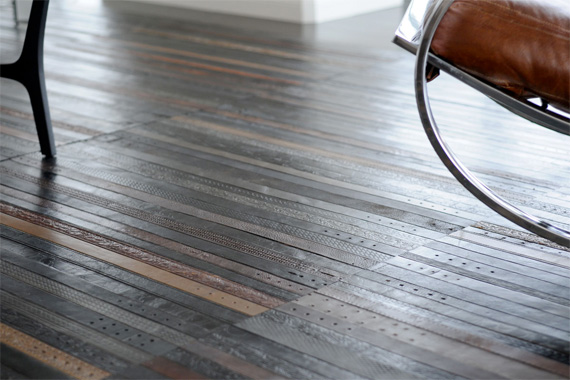 |
| Credit: TING |
Cents and Sensibility
Like the look of copper? So did mosaic artist Amanda Edwards, who decided to cover her kitchen floor entirely in pennies. One year and 31,140 pennies later, the project was complete. Edwards glued each penny individually, then finished with black sanded grout and 3 coats of polyurethane floor sealant.
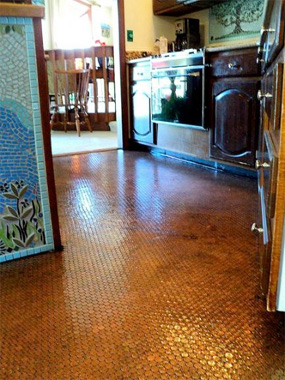 |
| Credit: Amanda Edwards |
Just Faux Fun
When Just About Home blogger Peggy Kronick wanted to dress up the plain plywood floors of her cabin, she went faux it. After two coats of blue latex paint, she applied a gray topcoat and used a wood graining tool ($7) to simulate the look of real planks. Four coats of polyurethane sealer makes a scrubbable floor.
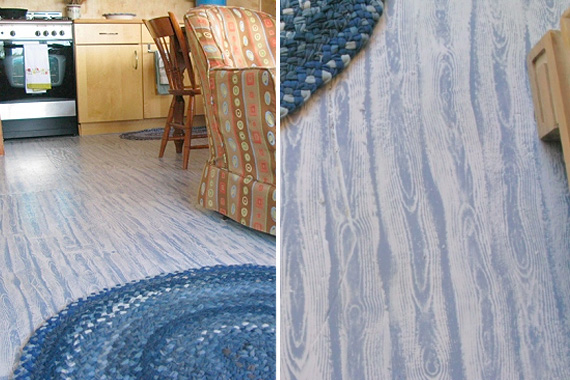 |
| Credit: Just About Home blog |
All That Glitters ...
Got a boring, plain concrete floor? Turn it into a dazzling surface worthy of Trump Tower using epoxy paint for garage floors. Instead of sprinkling those standard black and white color chips, blogger The Crafty Chica used sparkly craft store glitter. Tip: Don’t spread the glitter like chicken feed; instead, toss it into the air and let it flutter down.
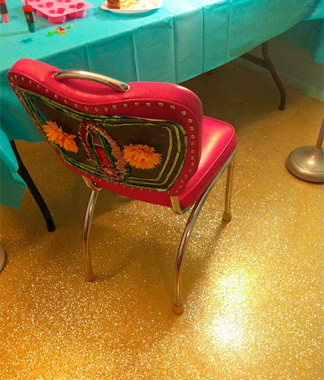 |
| Credit: The Crafty Chica |
Who Are You Kidding?
Looking like the floor of a kindergarten art class, “Carving Kids” engineered flooring from Mafi is made from three layers of cross-laminated wood — top and bottom are oak. A computer-controlled cutter carves the etchings into the top layer. Non-toxic finishes make this floor especially kid-friendly. $25 per sq. ft., depending on quantity.
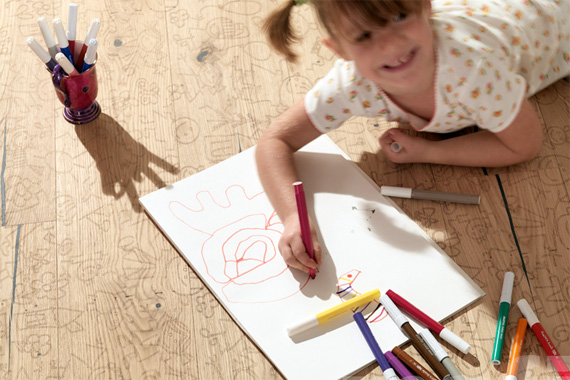 |
| Credit: Mafi Flooring |
To Cap it Off ...
If you like colorful floors, start gathering bottlecaps from your favorite beverages — you’ll need about 120 caps to make 1 square foot of mosaic-like bottlecap flooring. Speed up collection by asking local restaurants and bars to save their caps for you. Install tough little bottlecaps like small tiles: Set them in thin-set mortar, then fill in the spaces with sanded grout. Finish off with polyurethane floor sealant.
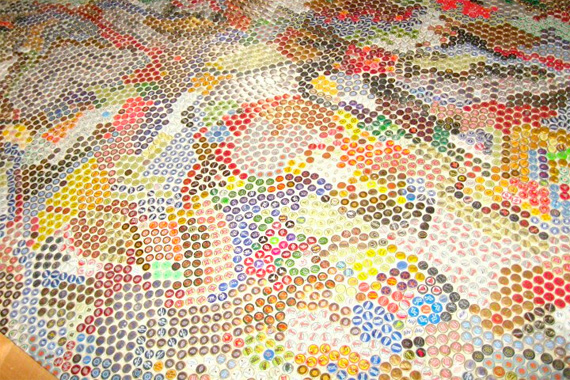 |
| Credit: The Phoenix Commotion |
A Toast to Flooring
If the thought of a fine malt whiskey gets you nostalgic for the Scottish highlands, then here’s a floor to sweeten your dreams. Reclaimed wood floors from McCay Flooring are made from authentic whisky barrels. Although the scent of the spirits has faded, the old markings and stamps on the white oak staves are plainly visible. About $35 per sq. ft.
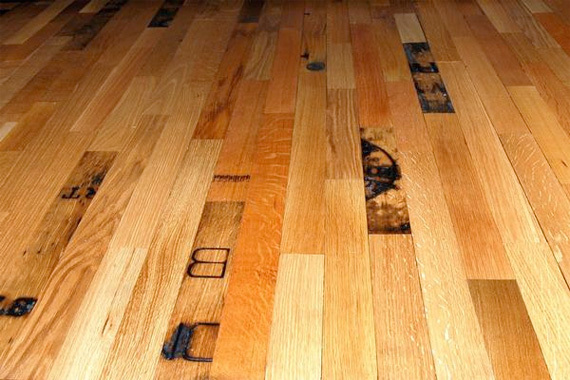 |
| Credit: McKay Flooring |
Jazz Your Terrazz
If you can afford the $10 to $50 per sq. ft. cost of a terrazzo floor, you probably won’t mind springing an extra $25 to $250 each for some decorative brass or stainless steel inlays. Custom order some from a local metal artist, or hire a commercial shop that’ll make your designs using the latest computer-controlled water-jet cutter.
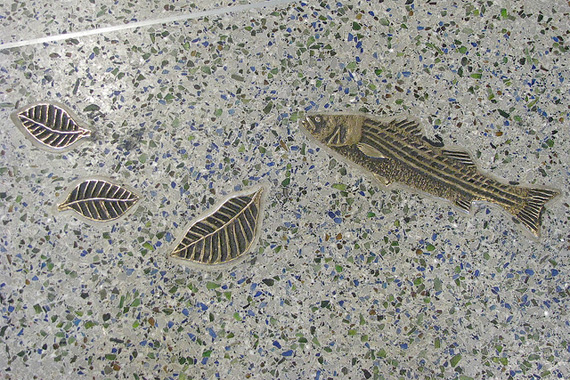 |
Credit: flickr user technoclave |
Put a Cork in It
A tribute to determination, patience, and maybe a touch of OCD, this wine cork floor has over 10,000 corks in it. Each was glued down with ceramic tile adhesive and fastened with a finish nail. Cork comes from renewable sources, so consider wine cork flooring as a sustainable salvaged building material. You’ll need lots of wine-loving friends and perhaps a nearby winery or two to help supply you with enough materials. Fun!
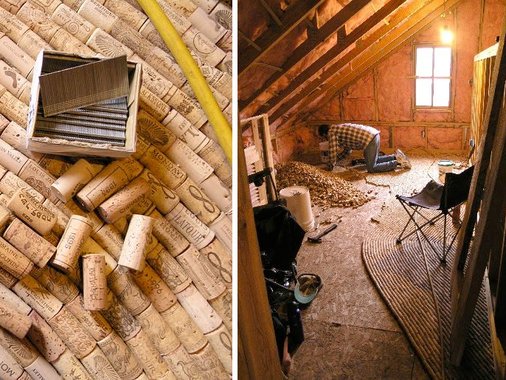 |
| Credit: The Phoenix Commotion |
It’s in the Bag
Tired of an old concrete floor in her powder room, CompulsiveInTexas blogger Susan Catney decided to bag it — literally. She took pieces of brown paper bags and contractor’s paper, crumpled them up, soaked them in white glue, and pressed them tight to the floor. When dry, she stained them, then finished with multiple coats of polyurethane. The faux-leather look always get compliments.
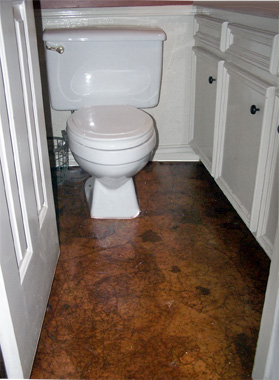 |
| Credit: Susan Catney |
Walk This Way
Or breakdance, if you’d rather, urged on by instructive decals. Made of heavy-duty vinyl or polypropylene, self-adhesive decals are used on walls but will work on smooth, sealed concrete slabs, such as a basement floor. Lots of designs; this 50-by-37-inch decal is $25.
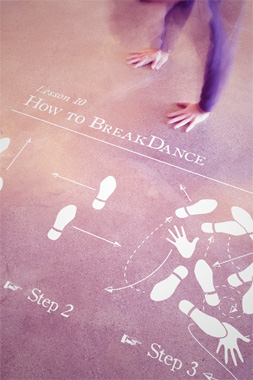 |
| Credit: Blik Surface Graphics |
Source: Houselogic

No comments:
Post a Comment